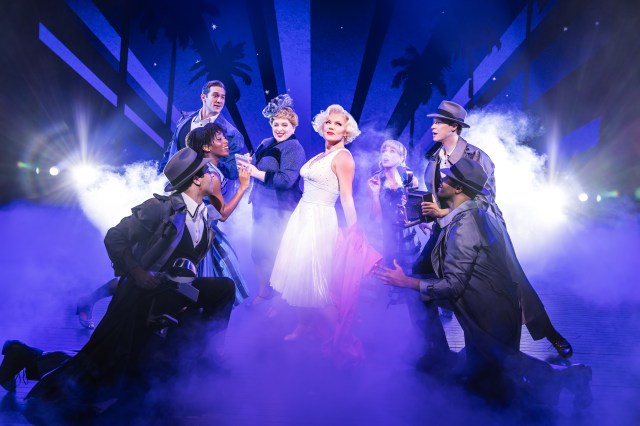Review: New York, New York Offers Too Much and Too Little
John Kander draws from the Martin Scorsese movie musical, his back catalogue, and more for his latest Broadway show, with mixed results.
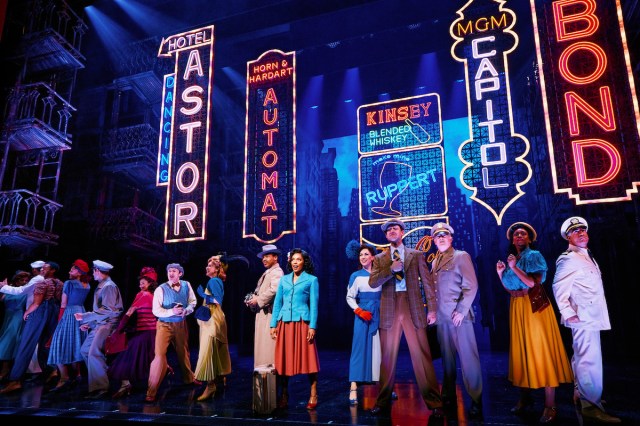
(© Emilio Madrid)
Of all the films to inspire a Broadway musical adaptation recently, Martin Scorsese’s 1977 film New York, New York seemed the least promising candidate of all. Though it boasts a handful of lovely John Kander and Fred Ebb songs — most famously its theme song, sung by Liza Minnelli two years before Frank Sinatra’s popular interpretation — the film is the chronicle of an emotionally abusive relationship, with Minnelli’s Francine Evans struggling to extricate herself from the clutches of egomaniacal saxophonist Jimmy Doyle (Robert De Niro). No surprise that many moviegoers at the time found such a proposition unappealing; the film drew mixed reviews and failed at the box office.
And yet, John Kander himself has returned to the Scorsese film for inspiration. Drawing from elements of Earl Mac Rauch and Mardik Martin’s screenplay, he has not only reached into his and Ebb’s back catalogue, but also brought in David Thompson and Sharon Washington to come up with a book, as well as Lin-Manuel Miranda to provide additional lyrics to brand-new Kander songs. The result is the New York, New York musical that just opened on Broadway, reconceived as a love letter to the cultural melting pot that is New York City. It is also an overstuffed misfire.
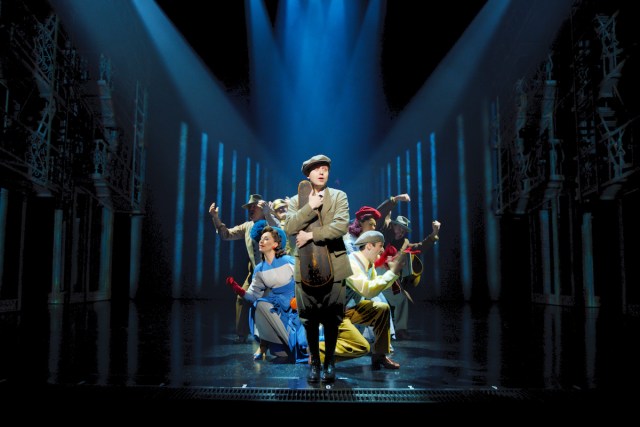
(© AKA)
Some of the problems begin with its conception, with Thompson and Washington’s book aiming for a panoramic approach. In addition to the troubled relationship that develops between Jimmy Doyle (Colton Ryan) and Francine Evans (Anna Uzele), Black Army vet Jesse Webb (John Clay III) yearns for success as a trumpeter and Polish teen Alex Mann (Oliver Prose) longs to improve his violin skills. Chief among the supporting players, though, is drummer Mateo Diaz (Angel Sigala), a Cuban immigrant who envisions bringing the music of his home country to the US, though he has to surmount obstacles like a dead-end line-cook job and an abusive father.
It takes a certain kind of talent to include all these characters in ways that make every one of them seem like genuine human beings. Instead, the one-dimensional supporting characters of New York, New York are defined by their race and social class. Worse, in Thompson and Washington’s book, some of them disappear for long stretches, as if they had lost track of them in trying to keep up with the two lovebirds at the center.
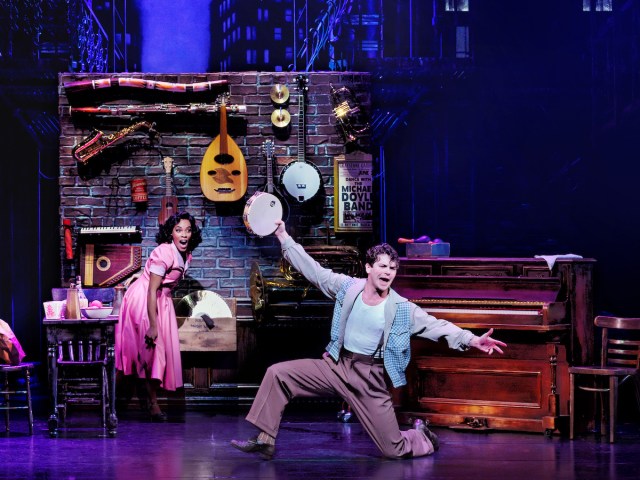
(© Paul Kolnik)
Speaking of the central pair: Say what you will about the Jimmy Doyle of Scorsese’s film, but the bastard was memorable, however unpleasant. The blander Jimmy of the stage musical is “merely” alcoholic and hot-tempered, no different from countless other self-destructive talents in both theater and history. Maybe Ryan is aware of how generic his character is — a possible explanation for his embarrassingly mannered performance, with his Kermit the Frog-like voice and inexplicable accent. Not even sound designer Kai Harada, otherwise doing solid work in making sure we can hear the lyrics, can save Ryan’s rendition in Act 2 of “A Quiet Thing,” in which his focus appears to have been on delivering it as quietly as possible.
By contrast, Uzele confirms the talent she showed as Catherine Parr in Six, tackling a more empowered-verging-on-entitled Francine. And yet, as impressive as her singing voice is, I couldn’t help but be distracted by how contemporary it sounds, as if Beyoncé or Adele had traveled back to the post-war 1940s. But then, despite being set in 1946 and ’47, this New York, New York feels ahistorical, positing a culturally inclusive milieu that must have been less overtly utopian than this show suggests.
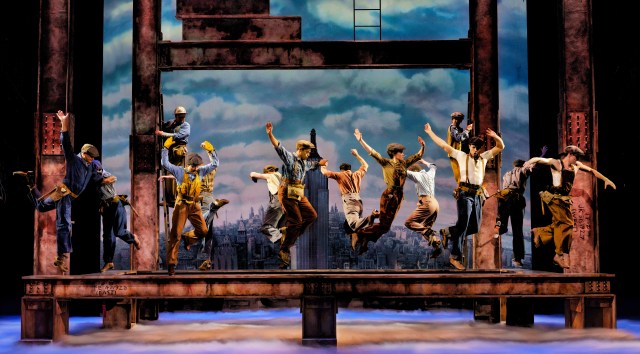
(© Paul Kolnik)
There are occasional bright spots under Susan Stroman’s direction. A tap-dance number (choreographed by Stroman and Phil Colgan) featuring Jimmy, his friend Tommy (Clyde Alves), and construction workers atop a skyscraper is a highlight, as is Jimmy, Mateo, and Jesse’s ebullient Latin-tinged jam session in Act 2. Set designer Beowulf Boritt’s glitzy neon-lit marquees and apartment complexes and costume designer Donna Zakowska’s colorful period tops and gowns offers some pleasingly old-fashioned Broadway dazzle. It’s lighting designer Ken Billington, however, with the help of Boritt and Christopher Ash’s projections, who comes up with the show’s best stage visual in his gorgeous re-creation of the magic hour during a Manhattanhenge sunset in the penultimate “Light” number.
And then, of course, there’s the title song, presented at the end with the orchestra raised up from the pit. Uzele delivers the sizzle (even if she doesn’t beat Minnelli’s rendition in the film — but then, arguably, neither did Sinatra) to support that thrilling bit of staging. Alas, the appropriately grand finale doesn’t strike enough sparks to banish memories of the clichéd and frustratingly muddled path it takes to get there.
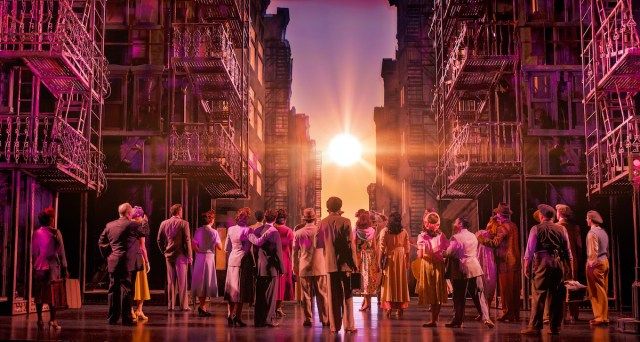
(© Paul Kolnik)








